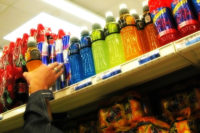Dramatic changes in demographics, lifestyles, and eating patterns of consumers are helping drive packaging technology innovations in the food and beverage industry, according to market researcher Packaged Facts.
According to researchers, with one- or two-person households now representing 61 percent of all US households, packages sized to serve one or two people are a big trend. These package formats include single-serve fare, meals for two, multi-packs of individual portions, and resealable packages. Resealable, stand-up packaging is on the rise because of the presence it has on store shelves and the space it saves at home. Marketers are also switching to pouches to give their brands a more contemporary look to appeal to Millennial consumers. At the same time, smaller sizes are springing onto retail shelves as a way to control portion size and reduce calories per serve, particularly in snack foods and beverages.
According to Packaged Facts, almost seven out of 10 people say freshness, followed by food safety, are their highest priorities in food and beverage packaging. The top three features consumers want in food and beverage packaging are tamper-proof, easy to open, and resealable. Other packaging benefits popular among consumers are portability, lighter weight, and no-mess dispensing.
When it comes to communicating values, transparency is key and taps into consumer desire to know how food and beverages are produced. Because of this many companies are using clear packaging or see-through windows to provide a view of the product from outside the package. Eco-friendly packaging is also growing, especially for single-serve bottled water. Recent innovations in eco-friendly packaging include Coca-Cola's PlantBottle, which the company calls the world's first PET plastic bottle created solely from plant-based materials, and Nestle Waters North America's new bottle for its Resource Natural Spring Water, which is made from 100 percent recycled materials.





